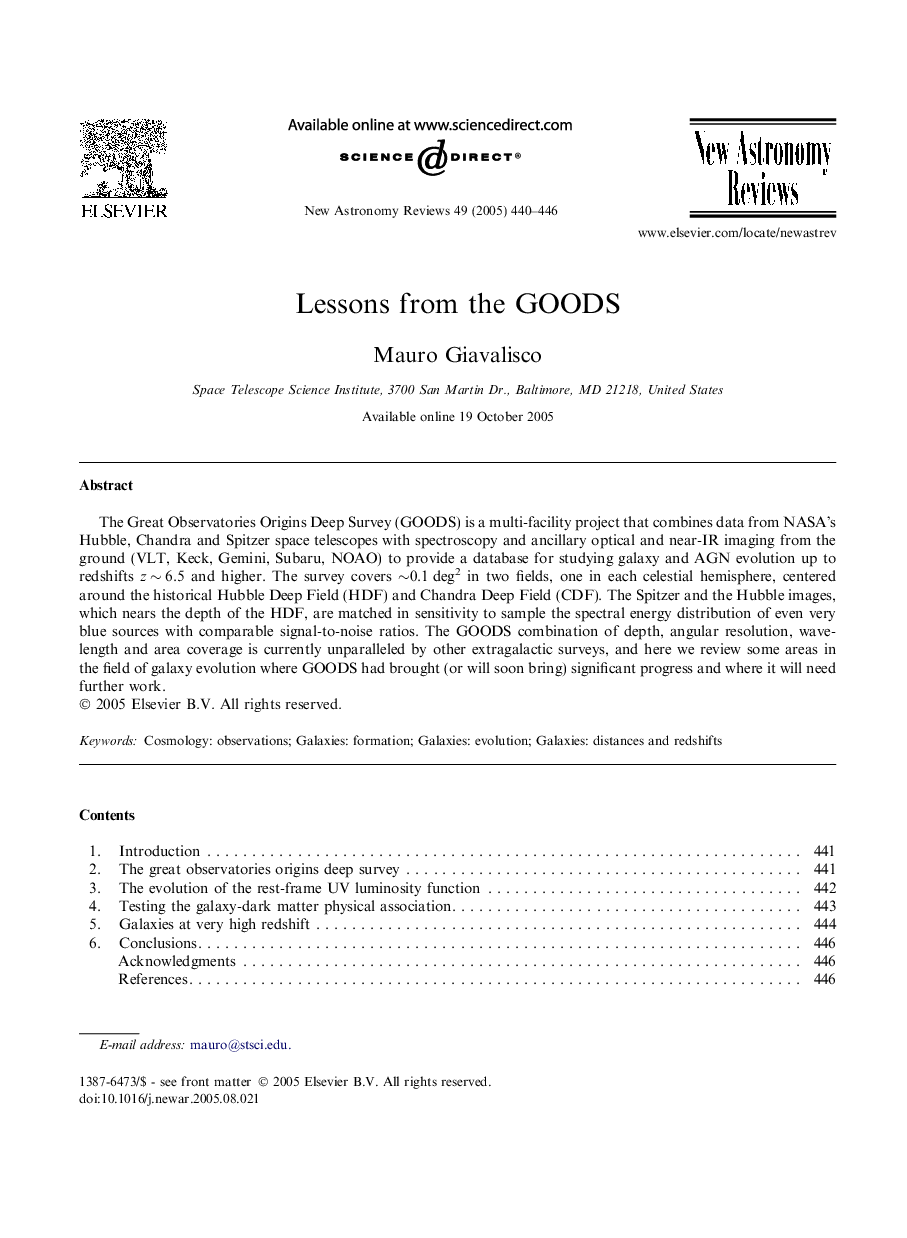| Article ID | Journal | Published Year | Pages | File Type |
|---|---|---|---|---|
| 9827983 | New Astronomy Reviews | 2005 | 7 Pages |
Abstract
The Great Observatories Origins Deep Survey (GOODS) is a multi-facility project that combines data from NASA's Hubble, Chandra and Spitzer space telescopes with spectroscopy and ancillary optical and near-IR imaging from the ground (VLT, Keck, Gemini, Subaru, NOAO) to provide a database for studying galaxy and AGN evolution up to redshifts z â¼Â 6.5 and higher. The survey covers â¼0.1 deg2 in two fields, one in each celestial hemisphere, centered around the historical Hubble Deep Field (HDF) and Chandra Deep Field (CDF). The Spitzer and the Hubble images, which nears the depth of the HDF, are matched in sensitivity to sample the spectral energy distribution of even very blue sources with comparable signal-to-noise ratios. The GOODS combination of depth, angular resolution, wavelength and area coverage is currently unparalleled by other extragalactic surveys, and here we review some areas in the field of galaxy evolution where GOODS had brought (or will soon bring) significant progress and where it will need further work.
Keywords
Related Topics
Physical Sciences and Engineering
Physics and Astronomy
Astronomy and Astrophysics
Authors
Mauro Giavalisco,
